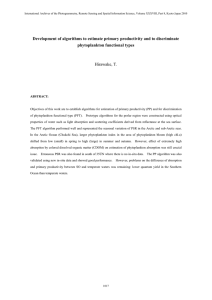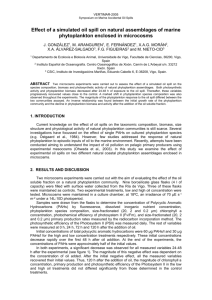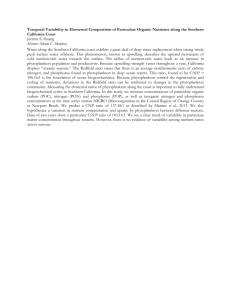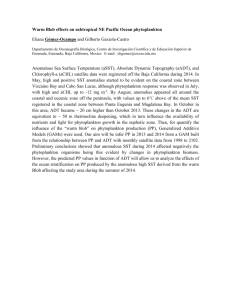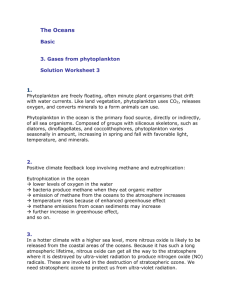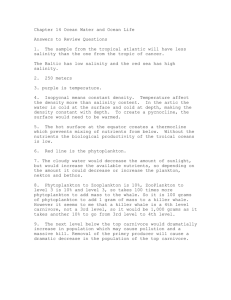Pesticides are widely used for domestic and agricultural
advertisement
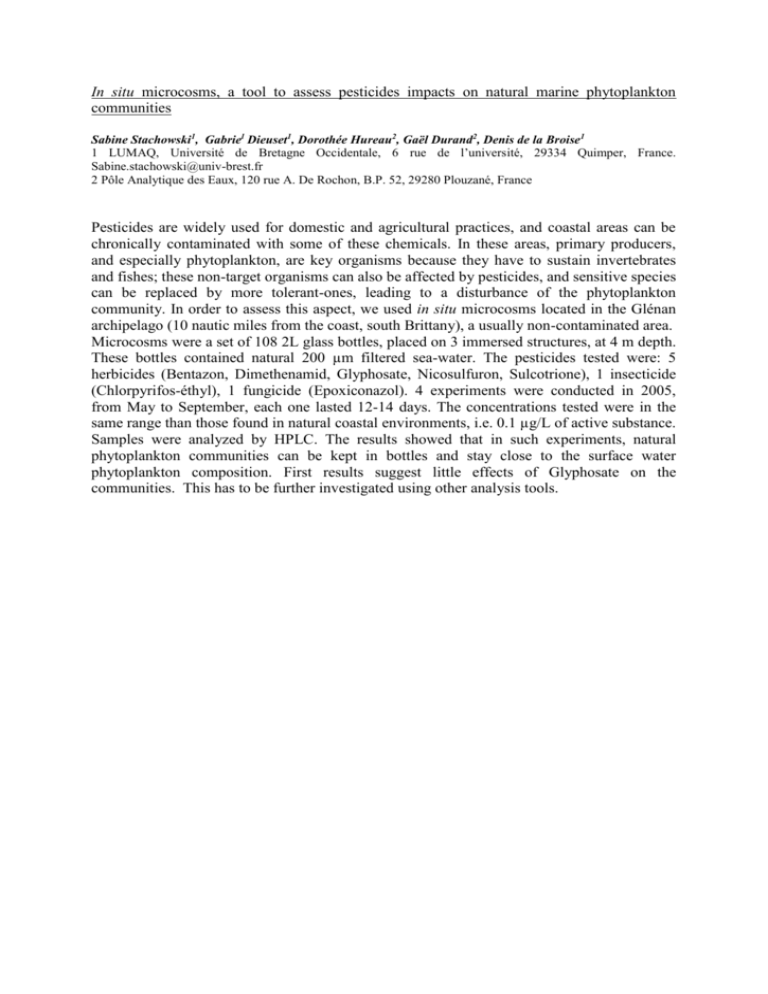
In situ microcosms, a tool to assess pesticides impacts on natural marine phytoplankton communities Sabine Stachowski1, Gabriel Dieuset1, Dorothée Hureau2, Gaël Durand2, Denis de la Broise1 1 LUMAQ, Université de Bretagne Occidentale, 6 rue de l’université, 29334 Quimper, France. Sabine.stachowski@univ-brest.fr 2 Pôle Analytique des Eaux, 120 rue A. De Rochon, B.P. 52, 29280 Plouzané, France Pesticides are widely used for domestic and agricultural practices, and coastal areas can be chronically contaminated with some of these chemicals. In these areas, primary producers, and especially phytoplankton, are key organisms because they have to sustain invertebrates and fishes; these non-target organisms can also be affected by pesticides, and sensitive species can be replaced by more tolerant-ones, leading to a disturbance of the phytoplankton community. In order to assess this aspect, we used in situ microcosms located in the Glénan archipelago (10 nautic miles from the coast, south Brittany), a usually non-contaminated area. Microcosms were a set of 108 2L glass bottles, placed on 3 immersed structures, at 4 m depth. These bottles contained natural 200 µm filtered sea-water. The pesticides tested were: 5 herbicides (Bentazon, Dimethenamid, Glyphosate, Nicosulfuron, Sulcotrione), 1 insecticide (Chlorpyrifos-éthyl), 1 fungicide (Epoxiconazol). 4 experiments were conducted in 2005, from May to September, each one lasted 12-14 days. The concentrations tested were in the same range than those found in natural coastal environments, i.e. 0.1 µg/L of active substance. Samples were analyzed by HPLC. The results showed that in such experiments, natural phytoplankton communities can be kept in bottles and stay close to the surface water phytoplankton composition. First results suggest little effects of Glyphosate on the communities. This has to be further investigated using other analysis tools.


